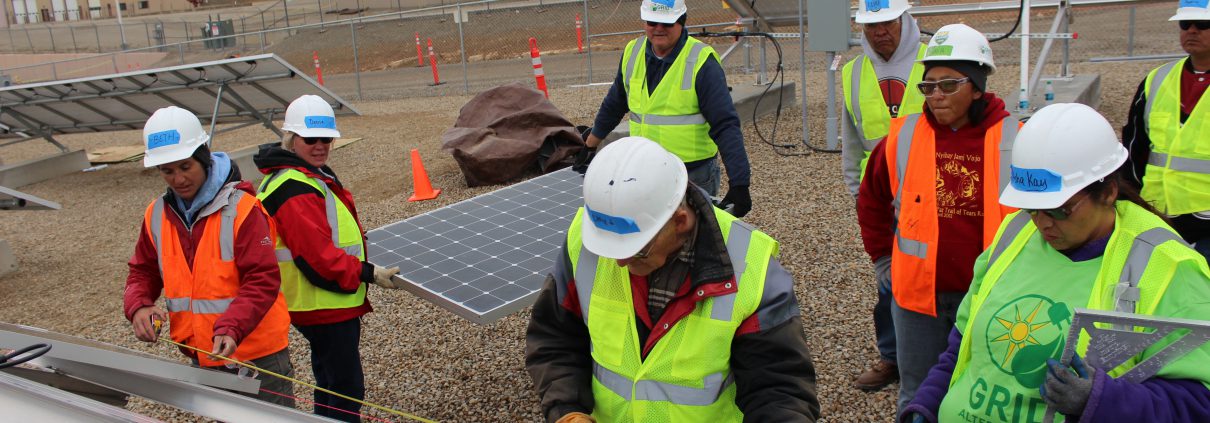Community Solar Provides a Lasting Impact
One partnership plus 70 community solar panels adds up to average annual savings of $485 on electric bills for seven local families in Empire Electric Association’s territory. These qualified subscribers are receiving savings from EEA and GRID Alternatives Colorado because of a new solar garden as it brings the benefits of solar to the families who need it most — those who spend more than 4 percent of their income on utility bills.
Last year, EEA collaborated with GRID Alternatives and the Colorado Energy Office to build a solar garden solely dedicated to income-qualified subscribers. The partnership between GRID and CEO was formed to achieve two objectives: to lessen the energy burden for the most financially-strapped households and to assist electric utilities in achieving their renewable energy goals. The groundbreaking in Cortez marked the first of many historical projects around Colorado.
The solar garden will provide an estimated 36,749 kilowatt-hours annually and is located at Empire’s main office in Cortez. It is easily viewable by members being served by or interested in photovoltaic systems.
“As a member-owned cooperative, Empire is concerned about the best interests of our members,” EEA General Manager Josh Dellinger said. “We see this low-income community solar project as an opportunity to positively impact the communities we serve. Empire is providing a hand up rather than a handout to the subscribers — everyone benefitting contributed through sweat equity and will continue to contribute financially through a monthly energy payment.”
Qualified families agree to lease their allotted panels from EEA for five years. They are billed monthly for grid connectivity, demand charges and energy consumption while receiving a bill credit for the production of their panels. Subscribers of the solar garden can live more affordably in their homes as part of this hand up opportunity.
GRID initiated a barn-raising model for assembling the 70 solar panels and engaged members of the community to come together to install the system. It was accomplished with the help of 30 volunteers, which included trainees, EEA staff and other community members.
Eleven of the volunteers helping to install the solar array attended Navajo Technical University in New Mexico and were taking courses on photovoltaic system design and installation. They travelled 150 miles to access the invaluable field experience offered by this project.
“This is a big hands-on project for me,” said Clifford Allen, an NTU student. “In school we usually work on one or two panels, but this time we worked on 70 panels. It is definitely a good experience to actually work from the start to finish.”
Another volunteer working on behalf of her mother, an applicant subscriber, said, “I have learned so much. I think any program like this would be good for anyone, not just my mom. It helps offset some of the expenses that can be taken on when you’re older or low income, and any little bit helps.”
The project’s size allows for easy operation and maintenance. The system hosts a web-based monitoring portal that provides real-time monitoring. This information helps EEA’s staff better understand photovoltaic system performance, operation and maintenance at a location that is convenient and on a scale that is manageable.
The lasting impacts of the EEA and GRID Alternatives Solar Garden project include energy production valued at $147,545, the equivalent of 15,859 trees being planted, and 100 percent assistance for deserving families. For those directly involved, the lasting impacts include a clearer knowledge of how a photovoltaic system is assembled and how it is bringing the benefits of solar to the families who need it most.
Empire Electric is one of six electric co-ops in Colorado with a solar garden dedicated to assisting income-qualified members.



